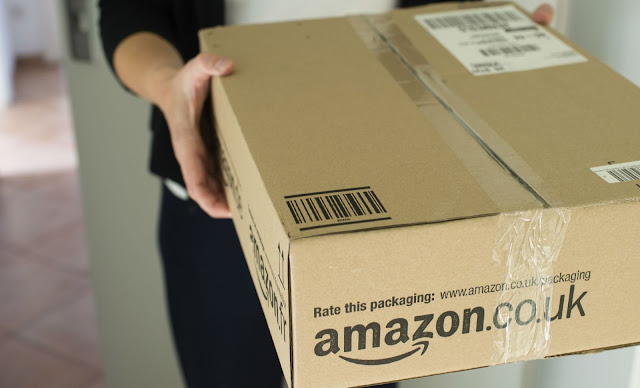
Have you ever noticed that your Amazon sales have a seasonal component to them? Perhaps your sales increased significantly in the fourth quarter of the year or dropped dramatically in particular months.
Most product categories are affected by seasonality, which necessitates examining its rhythms and figuring out how to take advantage of them. For example, if you succeeded to sell T-shirts on Amazon, you'd be correct in anticipating better sales throughout late spring, rather than throughout the colder winter months. However, you should not make the mistake that many merchants do of expecting bigger sales volumes during certain times of the year and then ignoring advertising throughout the slow season.
When your product's demand is highly influenced by seasonality, you'll need three different strategies: one for the peak, one for the off-season, and one for the shoulder season, just before and after the peak. Seasonality necessitates a slightly different approach to campaign structure, bidding techniques, and other factors.
Setting Up Structured Ad Campaigns
For your seasonal products, you require specialised, organised promotions. Seasonality may be approached with Amazon Advertising in a variety of ways, depending on how you structure your campaigns to adapt to it. Here, we'll discuss two possible strategies.
One solution is to only run advertising for seasonal products during the on-season and bid on your seasonal keywords. This method works well for seasonal products with a strong ramp-up and drop-off, as well as things that are unusable by the majority of the population during the off-season, such as beach chairs.
Another technique to manage seasonality in Amazon PPC is to include seasonal keywords and targets in your regular ads, but increase your bids on them when the time comes. Let's say you're selling large packs of fun-sized candies for Halloween. Obviously, demand will be considerably higher in the weeks leading up to Halloween than the rest of the year, but you may still have clients throughout the off-season.
To increase engagement, you must use all available tools, which includes creating Amazon campaigns and ad groups. Individual campaigns for each key product category, such as books or electronics, are the best method. Then, inside each campaign, create distinct ad groups. For each ad group, you'll need to do some keyword research. Then, for each category, create appropriate adverts that use these top keywords so you may target the demographic that is most likely to be interested in what you have to offer and drive more traffic to your items.
The advantage of the first choice is that you may switch it on and off without disrupting your other campaigns. The advantage of the second method is that you can maintain track of how your seasonal products are performing.
Budgeting and Amazon Seasonality
Now, there are two ways to go about this.
The first, involves you taking up the role of a gambler. It entails assuming that the seasonal cycle will kick in at some point in the future, increasing demand for your goods. The degree of gambling involved, of course, is determined by how constant your on-season is and how much past data you have access to.
This technique comprises raising bids for all of your seasonal keywords just as demand for your seasonal goods begins to increase. You won't be able to take full advantage of peak demand if you wait until it's already in full swing.
On the other hand, the other method is to examine your stats for signals that your on-season is about to begin in your Amazon reports. If your seasonal cycle is less rigorous and more unpredictable, you may want to depend more heavily on this method to avoid squandering money on a false start. On the other side, if you don't detect the symptoms in time, it may allow your competitors to gain an advantage.
Consider boosting your marketing budget and spending aggressively to generate more sales once you've properly optimised to capitalise on the higher demand that you'll see during your season. If required, you may easily cut back on expenditures during other months (when demand for your products is low). Don't worry; as long as you monitor your ACoS and ROI and your stats reflect that you're profitable, you'll be fine.
Seasonal Campaigns - to pause or not to pause?
You may leave your seasonal campaigns paused throughout the off-season without fearing that they'll be slow to wake up when the time comes if you have a "cliff-type" campaign with extremely brief shoulder seasons and very swift shifts in demand.
However, we recommend advertising throughout the year. Simply said, initiatives must get traction before they can begin to perform successfully. Each campaign typically takes at least a few weeks to start producing the desired effects. If you continuously start and stop during the year, your campaign will never be able to reach its full potential.
Consider this: You may increase the seasonal reach of your items by promoting them all year. Your campaign outcomes have more lasting power both before and after the hectic season. You get more bang for your buck overall.
Organic sales will benefit from your continuous PPC efforts, providing you with even more momentum. Let's dig a little deeper into this by talking about an often-overlooked feature on Amazon: credited conversion. When a sale is ascribed to something other than the previous click, this is known as attribution bias.
Using Seasonal Keywords
The purpose of Amazon's search engine is to provide consumers with the most relevant product results based on their search queries. When it comes to product listings, Amazon searches for keywords in the title, description, and bullet points, among other places. Amazon "indexes" these keywords in its database to show items every time they are searched, which entails gathering, interpreting, and storing the search terms.
Seasonal demand management in Amazon Advertising is more complicated than campaign budgeting and structuring. You must be adaptive enough to use many keyword bidding techniques at the same time. You may need to adjust the harmony between these two types of terms in your record depending on where you are in your seasonal cycle.
These seasonal keywords should be used in both your product listing and your Amazon PPC ads. Using relevant keywords in product listings will offer you ample chances to rank higher in organic searches, however, having keywords in your Amazon PPC campaign will give you an extra opportunity to rank higher in the search results for Amazon search queries.
Furthermore, you must keep track of your campaign's promotion expenditure on seasonal keywords to ensure that they do not eat into the sales of more general keywords.
Recording and Analyzing Amazon Seasonality
The examination of seasonality trends on Amazon is crucial to consider when planning for your items' sales. Assume you have a good grasp of your product's performance throughout the previous season. In such a situation, you may better plan for the forthcoming season by keeping merchandise on hand before the start of the season and setting up Amazon PPC advertisements accordingly.
You should keep the search term reports and a backup of your Amazon campaign data records for future reference. In terms of perception, a group of Amazon PPC professionals uses data representation programmes to examine how their seasonal cycles move, anticipate changes, and compare seasons a year to year.
Final Thoughts
During the peak season for your items, you'll want to spend more money on promotion to get as many sales as possible. Just keep in mind that you'll be dealing with a greater cost-per-click and will need to optimise your bids because other businesses will be vying for the same sales.
When it comes to altering your bids on seasonal items, you want to be proactive as well as responsive. Examine your Amazon analytics for changes that indicate the beginnings of seasonal shifts, but don't wait for your competitors to take the lead and grab the spotlight.
You can halt seasonal marketing during the off-season if your seasonal demand surges and decreases swiftly. Just remember to reawaken them in time to take advantage of the next on-season.
https://www.aihello.com/resources/blog/timeseries-and-seasonality-on-amazon-marketplace-and-how-to-deal-with-them/


